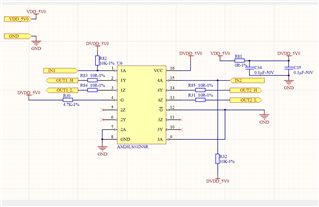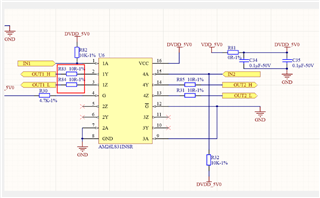Other Parts Discussed in Thread: ISO5451, , AM26LV32, AM26C31

The picture above is the circuit diagram design, and the chip is hot when working. The 5V for power supply, the current is very small, about 50mA, I have the following questions:
1、What causes the chip to be hot?
2、 Is there a problem with the circuit diagram design?
3、How to improve the problem of fever?
4、Are there any other better design recommendations?



